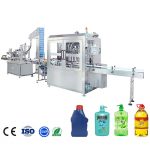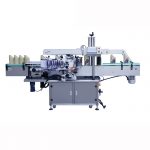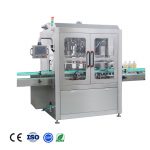A Lami tube filling machine is a machine used to fill tubes with products such as toothpaste, ointments, and other similar products. It is a key piece of equipment in the production of these types of products, as it allows for the efficient and accurate filling of tubes at a high speed. In this guide, we will cover the various components of a Lami tube filling machine, how it works, and some common features and options that are available.

The main components of a Lami tube filling machine include the tube magazine, the filling station, the sealing station, and the cutting station.
The tube magazine is where the empty tubes are stored before they are filled. The tubes are typically made of plastic or aluminum and are fed into the machine one at a time.
The filling station is where the product is dispensed into the tubes. There are several different types of filling systems that can be used, including piston fillers, gravity fillers, and peristaltic fillers. Piston fillers use a piston to dispense the product into the tubes, while gravity fillers use the force of gravity to dispense the product. Peristaltic fillers use a flexible tube to dispense the product.
The sealing station is where the tubes are sealed after they have been filled. This is typically done using heat, but some machines may also use ultrasonic sealing.
The cutting station is where the excess material is cut off from the top of the tube. This is done using a rotating blade or a hot wire.
After the tubes have been filled, sealed, and cut, they are typically ejected from the machine and sent to a packaging area where they are packaged for distribution.
In addition to the main components of the machine, there are several features and options that may be available on a Lami tube filling machine. Some common features include the ability to handle different sizes and shapes of tubes, the ability to fill a wide range of viscosities, and the ability to fill tubes with multiple products simultaneously.
One important feature to consider when purchasing a Lami tube filling machine is the speed at which it can operate. High-speed machines are able to fill and seal hundreds or thousands of tubes per minute, making them ideal for high-volume production. However, these machines may be more expensive and may require more maintenance.
Another important feature to consider is the level of automation. Some machines are fully automated, meaning that they can run without the need for operator intervention. Other machines may require manual loading of the tubes or may have semi-automated processes.
In terms of maintenance, Lami tube filling machines are generally straightforward to maintain. They typically require regular cleaning and lubrication to ensure that they are operating at peak performance. It is also important to ensure that the machine is calibrated properly, as this can affect the accuracy of the filling and sealing process.
Overall, a Lami tube filling machine is a key piece of equipment for the production of tubes of products such as toothpaste, ointments, and other similar products. It allows for the efficient and accurate filling of tubes at a high speed, and there are a wide range of features and options available to suit the needs of different applications. By understanding the various components of the machine and the options available, you can choose the best Lami tube filling machine for your needs.
There are several factors to consider when selecting a Lami tube filling machine. One of the first things to consider is the size and shape of the tubes that will be used. Different machines are designed to handle different sizes and shapes of tubes, so it is important to choose a machine that is compatible with your tubes.
Another factor to consider is the type of product that will be filled in the tubes. Different products have different viscosities and may require different types of filling systems. For example, thicker products such as toothpaste may require a piston filler, while thinner products such as lotions may be suitable for a gravity filler.
The speed at which the machine can operate is also an important factor to consider. High-speed machines are able to fill and seal hundreds or thousands of tubes per minute, making them ideal for high-volume production. However, these machines may be more expensive and may require more maintenance. If your production needs are lower, a slower machine may be more suitable.
The level of automation is another important factor to consider. Fully automated machines can run without the need for operator intervention, which can be more efficient and cost-effective in the long run. However, these machines may be more expensive upfront. On the other hand, manual or semi-automated machines may be more suitable for smaller production needs or for applications where a higher level of operator control is desired.
It is also important to consider the maintenance requirements of the machine. Lami tube filling machines are generally straightforward to maintain, but they do require regular cleaning and lubrication to ensure that they are operating at peak performance. It is also important to ensure that the machine is calibrated properly, as this can affect the accuracy of the filling and sealing process.
Other features to consider when selecting a Lami tube filling machine may include the ability to handle multiple products simultaneously, the ability to handle different viscosities, and the ability to fill tubes with multiple products simultaneously.
In summary, there are several factors to consider when selecting a Lami tube filling machine, including the size and shape of the tubes, the type of product that will be filled, the speed at which the machine can operate, the level of automation, and the maintenance requirements. By carefully considering these factors, you can choose the best Lami tube filling machine for your needs.










